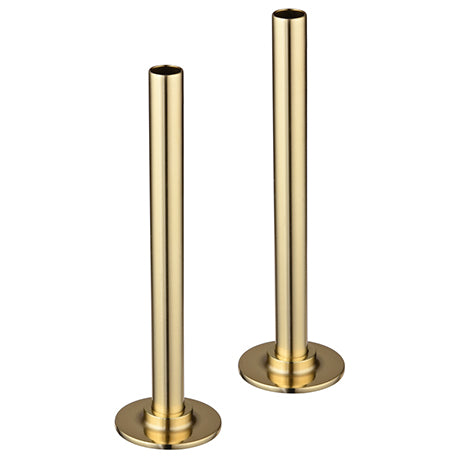How to Change a Radiator Valve: A 6-Step Guide
Table of Contents:
Introduction
Changing a radiator valve might seem like a daunting task, but with our step-by-step guide, you'll find it's a manageable DIY project. Whether you want to replace a faulty valve, upgrade to a thermostatic valve, or simply refresh the look of your heating system, we've got you covered.
Tools and Materials You'll Need
Before you begin, gather the following tools and materials:
Now that you're prepared, let's dive into the step-by-step process.
The 6 Step Guide
Step 1: Turn Off the Heating and Water Supply
Safety first! Ensure your heating system and water supply are turned off. For combi boiler systems, this step is straightforward. However, if you have a conventional system, it's best to seek help from a registered heating engineer.
Step 2: Identify and Prepare the Radiator Valves
Understanding your radiator valves is crucial. Most radiators have two valves: the lockshield valve (controls water flow) and the on/off valve (either manual or thermostatic).
Step 3: Release Pressure and Drain the Radiator
Using a radiator bleed key, open the bleed valve to release any stored pressure. If your lockshield valve has a drain-off, you can use it to drain the radiator. Place a container underneath to catch any drips.
Step 4: Remove the Old Radiator Valve
Carefully unscrew the old valve. Keep a towel handy to catch any water. Use a spanner to loosen the nut connecting the valve to the pipework.
Step 5: Install the New Radiator Valve
Slide the new valve onto the radiator tail, and use PTFE tape to prevent leaks. Connect it to the water pipe, tighten the nuts, and attach the thermostatic valve head.
Step 6: Final Checks and Re-Pressurizing
Open the new valve and turn the heating system back on. Check for any leaks, re-pressurize the system, bleed the radiator, and ensure everything is working correctly.
FAQ Section
1.Is it easy to change a radiator valve?
Changing a radiator valve can be relatively straightforward if you have some DIY experience and the right tools. However, it may not be recommended for first-time DIYers. It's always a good idea to consult a professional if you're unsure about the process.
2.How do you replace a radiator valve without draining the system?
You can replace a radiator valve without draining the entire heating system by following a specific process. Our step-by-step guide will walk you through the procedure to make it hassle-free.
3.Do you need to drain the radiator to change a valve?
In some cases, you may need to drain the radiator partially to change a valve. However, our guide provides a method to replace a radiator valve without fully draining the system, preserving important heating additives and inhibitors.
4.How much does a plumber charge to replace a radiator valve in the UK?
The cost of hiring a plumber to replace a radiator valve in the UK can vary depending on factors such as location, the complexity of the job, and the plumber's rates. On average, you can expect to pay anywhere from £50 to £150 for this service. It's advisable to get quotes from local plumbers to determine the exact cost for your specific situation.
Conclusion
By following our Changing a radiator valve step-by-step guide , you can accomplish this DIY project with confidence. Whether you're replacing a faulty valve or upgrading to a thermostatic one, this process can enhance your heating system's efficiency and appearance. Remember to prioritize safety and consult a professional if needed. Enjoy your newly installed radiator valve!

































